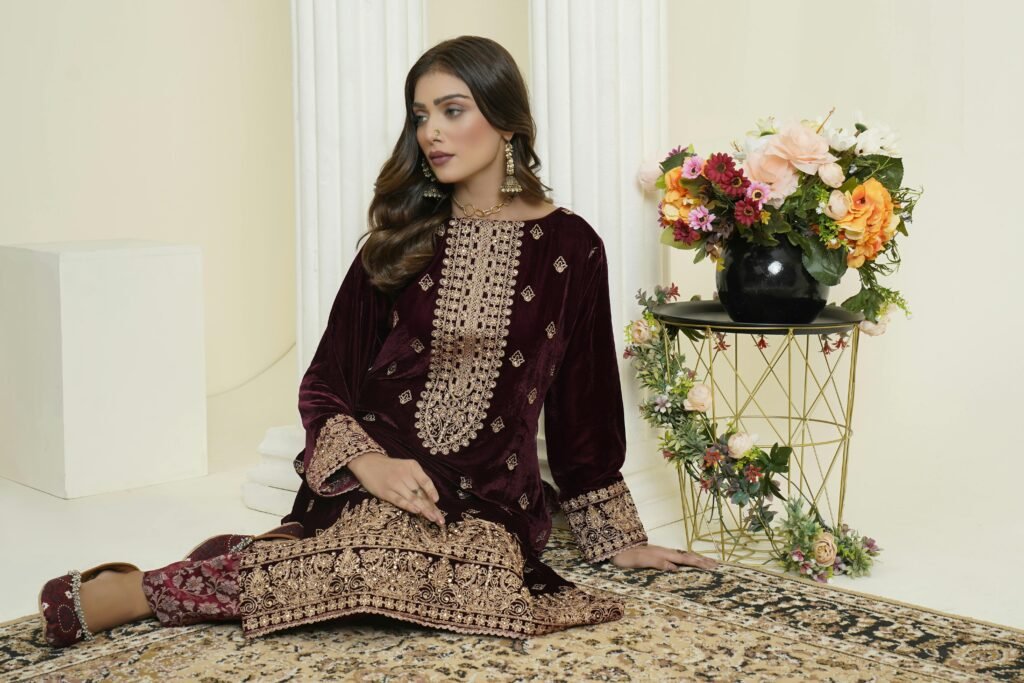Traveling for weddings or festive celebrations is always exciting—but when your suitcase is packed with intricate, heavy Punjabi outfits, it can quickly turn into a nerve-wracking experience. Punjabi attire is known for its rich fabrics, detailed handwork, and bold colors. From fully embroidered lehengas to zari-detailed suits, these garments hold cultural and emotional value. Ensuring they arrive at your destination in perfect condition is not just about careful packing—it’s about understanding how to handle delicate clothing while on the move.
Designers like Rizwan Beyg Designs have redefined Punjabi fashion with luxurious, statement-making outfits that are perfect for grand occasions and destination weddings. Their collections showcase traditional elegance with a modern flair, making them a top choice for people who don’t want to compromise on style, even when traveling. And because these premium outfits often involve intricate craftsmanship and delicate fabric, it’s important to handle them with the care they deserve from packing to unpacking.
Let’s walk through the best tips, techniques, and practical advice on how to travel with heavy Punjabi outfits—without damaging their beauty.
1. Understand the Nature of Your Fabric
Before you even think about packing, understand the fabric of each outfit. Silk, chiffon, velvet, and organza all behave differently in transit. While silk and chiffon can wrinkle easily, velvet may attract lint or get crushed. Identify which fabrics are more sensitive and prioritize how you’ll fold or roll them.
Heavy embroidered pieces, especially those with mirror work, beads, and sequins, should never be crammed into tight spaces. If possible, list your outfits by weight and delicacy so you can plan your luggage accordingly.
2. Invest in High-Quality Garment Bags
One of the best ways to protect your Punjabi outfits during travel is by using breathable, soft fabric garment bags. Avoid plastic or synthetic bags that can trap moisture and cause mildew or odors. Cotton or muslin garment bags not only protect your outfit from dust and dirt but also let the fabric breathe.
If you’re traveling for a wedding, consider dedicating a separate suitcase or carry-on just for your outfits. This might seem like a hassle, but it’s the safest way to keep everything in place and wrinkle-free.
3. Rolling vs. Folding – What Works Best?
While folding is traditional, rolling your clothes can actually prevent hard creases and save space. For heavy dupattas or full-length lehengas, roll them loosely with acid-free tissue paper in between layers. This protects embellishments and reduces the risk of embroidery snagging.
For example, if you’re carrying a mirror-worked dupatta or a gota patti suit, rolling prevents stiff creases across the most visible areas of the outfit.
For outfits that cannot be rolled, fold them along natural seams or embroidery breaks. Again, use tissue paper between folds and try to avoid folding right through beadwork or embroidery motifs.
4. Separate and Cushion the Accessories
Punjabi outfits often come with heavy accessories like jewelry, bangles, clutches, and even ornate footwear. These should never be packed in the same space as your delicate clothing. Sharp edges or metal parts can tear delicate fabrics like chiffon or net.
Use padded boxes for jewelry and separate compartments for shoes. Many travelers use small cloth pouches to keep jewelry from rubbing against one another and prevent tangling.
Additionally, avoid placing perfume bottles or hair sprays with your clothes unless they are sealed and secured. Leaked liquids can leave permanent stains and odors on expensive outfits.
5. Carry Heirloom Pieces in Your Hand Luggage
If you’re carrying expensive or emotionally valuable outfits, always keep them in your hand luggage. This is particularly important when you’re flying. Checked baggage can get lost, mishandled, or even opened during inspections.
Carrying your main bridal outfit or your most expensive suit in a foldable hanging bag as a carry-on ensures you’re always in control of how it’s stored and handled.
Once you arrive at your hotel or location, immediately unpack and hang your outfits. Give them a chance to breathe, and most wrinkles will fall out naturally.
6. Use Steam, Not Irons
Irons can be harsh on detailed embroidery, sequins, and mirror work. Instead, request a garment steamer from your hotel or carry a travel steamer with you. Steam is gentler and helps restore the garment’s shape without flattening the textures or damaging embellishments.
To use it safely, always turn the outfit inside out, and maintain a short distance between the steamer and the fabric.
7. Pack an Emergency Outfit Care Kit
A travel outfit care kit can save your day during emergencies. Include the following:
-
Safety pins
-
A small sewing kit
-
Double-sided tape
-
Travel-sized fabric freshener
-
Extra hooks and eyes
-
Matching thread for touch-ups
This kit is especially useful if you’re attending multi-day functions and don’t have immediate access to tailors or dry cleaners.
8. Know When to Dry Clean Before or After Travel
It’s a common mistake to dry clean outfits just before packing. The chemicals used during dry cleaning can react with sunlight or closed packing, causing discoloration.
Instead, air out the outfit well before packing and dry clean after you’ve returned from your trip—especially if you’ve worn the outfit in a humid or dusty environment.
9. Use Outfit Planning Apps or Labels
If you’re traveling with multiple outfits for different wedding events—mehndi, baraat, walima, or reception—it’s smart to label them with the day and function. This saves you time and stress on the big day.
Some brides and guests even take photos of themselves in trial fittings and label the picture with the accessories, shoes, and jewelry that go with it.
10. Repack for the Return Trip
Don’t just shove worn outfits back into your suitcase after the function. Air them out overnight, fold them properly, and place tissue between the layers again. If any piece is stained or smells like perfume or smoke, pack it separately in an airtight zip pouch to avoid contamination of your other outfits.
Conclusion
Traveling with heavy Punjabi outfits doesn’t have to be a burden if you prepare properly. By using quality packing materials, understanding your fabrics, and staying organized, you can arrive at your destination worry-free. Whether you’re attending a wedding in another city or planning your own destination ceremony, careful handling keeps your wardrobe looking fresh and regal.
Design houses like Rizwan Beyg Designs offer elegant Punjabi outfits that are worth every bit of attention and care while traveling. Their designs represent not just fashion, but heritage—so preserving them ensures you make a timeless impression wherever you go.







